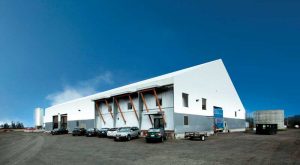
By Ben Fox and Ellie Fox
The success of a building project is dependent on many factors. Communication may be the most important factor of all. In order for everything to come together as planned, everybody needs to be on the same page with regard to design, materials procurement, and construction timelines, among many other considerations.
In the case of tension fabric buildings, there exists the unique potential for miscommunication while even just considering whether a fabric structure is the right architectural choice in the first place. This breakdown is not so much about a failure to communicate, however, but more of terminology simply meaning different things to different people based on experiences.
For many, the term “fabric building” carries negative connotations of being a cheap or temporary option. For others, the exact same words are 100 percent positive, as this group understands that with the right approach, fabric cladding brings a multitude of potential benefits to the table for water treatment facilities, recreational complexes, aircraft hangars, waste-to-energy plants, bulk salt/sand storage, and numerous other applications.
Revolutionary engineering
It is common with any product or service that has come a long way to describe that journey as its evolution. While evolution is a fair term to illustrate the past decade of the fabric building industry, what happened in the years before is perhaps better described as a revolution—a paradigm shift that fundamentally changed how fabric buildings were conceived and perceived.
Prior to 2010, most fabric structures were erected with hollow-tube web truss frames, and users were limited to whatever pre-defined dimension offerings had been established by different manufacturers. This often forced customers into a dilemma: settle for a cramped space or purchase more building than necessary. Such a decision was never ideal, but in certain industries with only the most basic facility needs, it was considered satisfactory.




